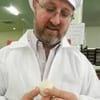Check out what is new in Poultry Industry
Find the best technical articles, forums, and videos on Poultry Industry at Engormix. Enter now and interact with the world's largest agricultural social network.
Over 900,000 analytical results from more than 18,000 samples of more than 500 feed raw materials from all over the world
Analysis of amino acid and fatty acid profiles, proximates, minerals, energy and various other quality parameters
Now available as a web application with regular updates
...
Comments : 1
Recommendations: 4
INTRODUCTION Supplementing poultry feed with specific enzymes improves the nutritional value of feed ingredients by increasing the efficiency of digestion and nutrient uptake. These enzymes help to increase the availability of nutrients particularly starch, protein, amino acids and minerals such as phosphorus and calcium from feed ingredients. Variability in the nutrient content of maize has been demonstrated to be as great as that observed for wheat and barley...
Comments : 1
Recommendations: 1
.jpg&w=3840&q=75)

Trends and challenges in Poultry Production: Jonathan Cade, President of Hy-Line International
Suggested link
.mp4&w=3840&q=75)
Let's Squawk About It is a monthly interview segment by the Poultry Science Association. The COVID-19 Pandemic has changed many aspects of life, but how about for a chicken? Roy Brister, of Tyson Foods, shares some insight on how feed formulation had to change due to a domino effect brought on by the pandemic....
Comments : 7
Recommendations: 8
INTRODUCTION Commercial poultry production is associated with a range of stresses, including environmental, technological (Surai and Fisinin, 2016a), nutritional, and internal/biological (Surai and Fisinin, 2016b) ones. It is believed that these stresses are responsible for decreased productive and reproductive performance of poultry (Surai, 2002), and, at the molecular level, most stresses are associated with oxidative stress and damage to important...
Comments : 0
Recommendations: 3
Description of Problem The demand for livestock products is increasing due to growing human population (1). Poultry products particularly broiler meat has a great potential to meet this demand due to its low feed conversion ratio (FCR) and short rearing period. Maize remains an integral component of broiler chickens feed and its inclusion in normal diets could be as high as 60% (2). The availability of maize all year round for poultry feed has reduced and this could be...
Comments : 1
Recommendations: 1
1. Introduction Chicken eggs are considered as an important and inexpensive source of high-quality protein. In particular, eggs contain various fatty acids, vitamins, and minerals that the human body requires to be healthy [1]. However, eggs are considered a major source of dietary cholesterol, since one egg contains more than 200 mg cholesterol. Therefore, egg consumption may lead to a significant elevation in plasma cholesterol levels and may increase the risk of...
Comments : 0
Recommendations: 3
...
Comments : 6
Recommendations: 3
...
Comments : 0
Recommendations: 1
Introduction Modern agriculture constantly strives to maximize biological performance of food production in an effort to optimize economic efficiency, profit potential, and sustainability. Commercial poultry production is among the most efficient and progressively successful of all food production sectors. What factors does it take for continued success in efficient poultry production? It takes the right genetics, combined with optimum health and management practices,...
Comments : 1
Recommendations: 5
...
Comments : 3
Recommendations: 0
Oral lesions in chickens can be caused by trichothecene mycotoxins (for example T2) but there are other causes including any contact toxins (CuSO4), excessive CuSO4 and physically rough forms of particulate Calcium. Mycotoxin binder salesmen regard oral lesions as pathognomic for lack of mycotoxin binder in the feed and diagnosticians always worry that a negative mycotoxin assay is a sampling artefact. This case study made me realize that oral lesions are not always associated with...
Comments : 0
Recommendations: 0
INTRODUCTION Heritage chickens are important for breeders and industry to protect valuable genes and traits over the long term. However, 50% or more of the genetic diversity is absent in commercial pure lines (FAO, 2007; Muir et al., 2008). Therefore, preserving potentially valuable genes by conducting research with heritage breeds is important. Changes in live weight and proportional growth of body components as affected by genotype and environmental factors are defined as...
Comments : 0
Recommendations: 0
The purpose of a minimum ventilation system is to bring in small amounts of cold fresh air into a house and to warm it as much as possible before it moves down to floor level so as not to chill the birds and to maximize the litter drying...
Comments : 5
Recommendations: 3
.mp4&w=3840&q=75)
Michael Binder, Vice President Sustainability Development at Evonik Animal Nutrition, points out Evonik’s commitment to sustainability performance with a focus on a positive impact for society, supporting sustainable livestock production in Brazil and around the world...
Comments : 1
Recommendations: 9
By: Centers for Disease Control and Prevention (CDC)
Eggs are one of nature’s most nutritious and economical foods. But it’s important that you take care when handling and preparing fresh eggs and egg products.
The inside of eggs that appear...
Comments : 0
Recommendations: 0
I. INTRODUCTION
The recent major drop in the cost of DNA sequencing, combined with advances in the annotation of 16S rRNA gene microbial databases and analysis tools, have all contributed to the “golden age of microbial ecology” (Oakley et al., 2014). Poultry researchers have leveraged and applied these advances to define approaches that may be taken to manipulate microbiota to improve a number of poultry production steps. One of the major issues in...
Comments : 0
Recommendations: 1
I. INTRODUCTION The profitability of the egg industry at commercial farm level is influenced by key production traits such as feed consumption, feed efficiency and egg quality. These measures of profitability are primarily controlled by genetics, but are also influenced by environmental factors leading up to the onset of lay and beyond. Consequently, inconsistency in voluntary feed intake and hen body weight can result in variations in feed efficiency, egg production and egg...
Comments : 0
Recommendations: 0
I. INTRODUCTION Over the last few decades, laying hen performance potential has largely been improved by genetic selection: egg production increased from 11.8 to 21.0 kg eggs per hen housed, FCR reduced from 3.29 to 1.96, mortality from 19.1 to 5.6% and body weight from 2.42 to 2.20 kg between 1970 and 2000 (Jeroch, 2011). Production cycles of 100 weeks without moulting will become commercially feasible based on improved laying persistence, although egg shell quality is still a...
Comments : 0
Recommendations: 1
.jpg&w=3840&q=75)

Trends and challenges in Poultry Production: Jonathan Cade, President of Hy-Line International
Suggested link
I. INTRODUCTION Exogenous phytase improved ileal amino acid digestibility by an average of 5% based on 745 observations across 24 studies in a systematic review (Cowieson et al., 2017). Nevertheless, the post-enteral availability of amino acids is ultimately determined by their transition across enterocytes in the gut mucosa. Amino acids may be denied access to the portal circulation because they may enter numerous anabolic pathways, or they may be catabolized for energy...
Comments : 0
Recommendations: 0
Copper (Cu) is an essential component involved in a wide variety of biochemical processes. It must be supplemented in the trace mineral premix as the amount present in raw materials is inadequate to meet broiler requirements. At levels higher than nutritional requirements (up to 250 mg/kg), dietary Cu addition enhances growth performance by altering gut microbiota and enhancing nutrient absorption. Such high levels may irritate the gizzard and result in high Cu levels in the poultry litter...
Comments : 0
Recommendations: 0






.jpg&w=3840&q=75)















.jpg&w=3840&q=75)












